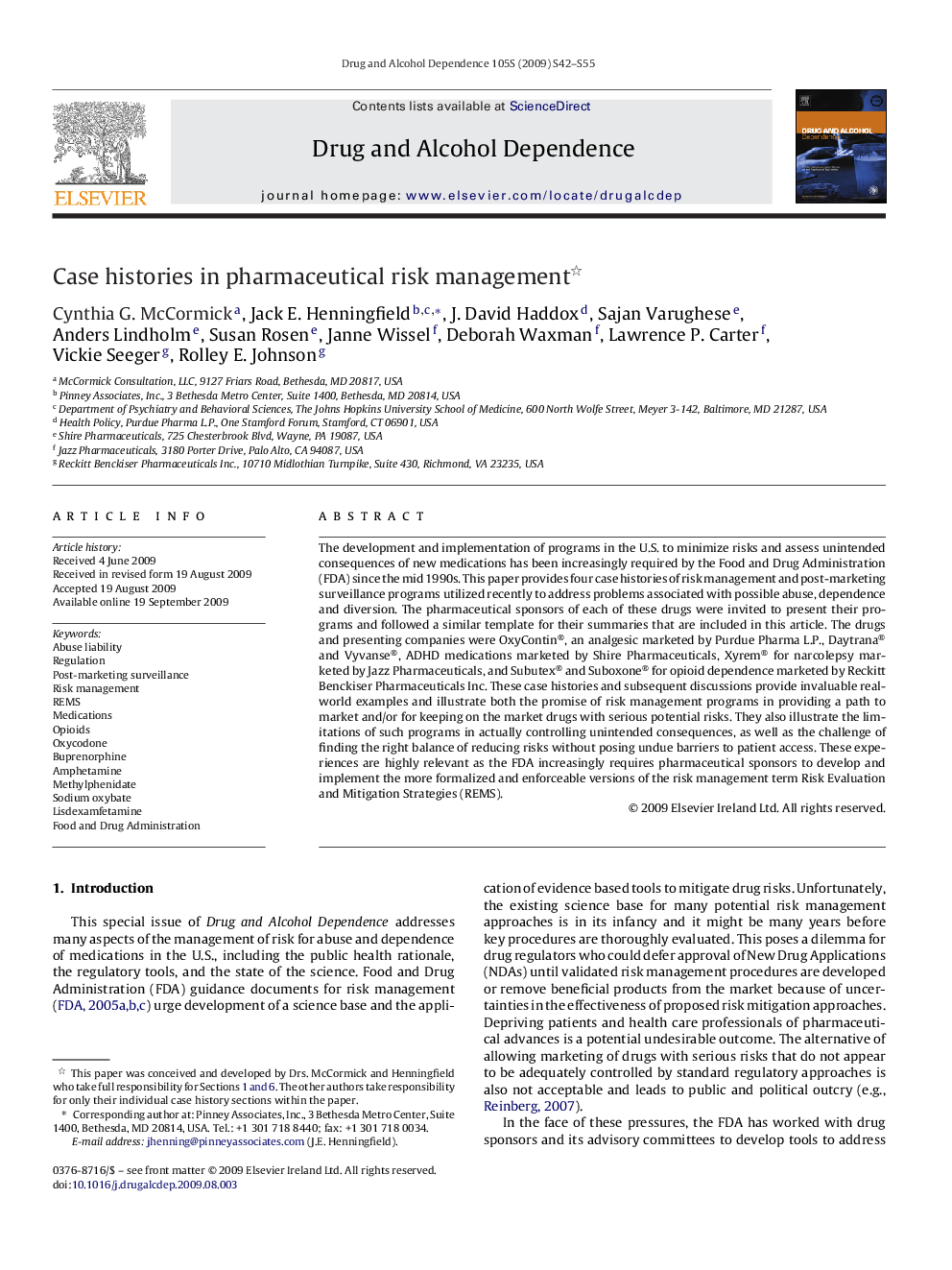| Article ID | Journal | Published Year | Pages | File Type |
|---|---|---|---|---|
| 1070644 | Drug and Alcohol Dependence | 2009 | 14 Pages |
The development and implementation of programs in the U.S. to minimize risks and assess unintended consequences of new medications has been increasingly required by the Food and Drug Administration (FDA) since the mid 1990s. This paper provides four case histories of risk management and post-marketing surveillance programs utilized recently to address problems associated with possible abuse, dependence and diversion. The pharmaceutical sponsors of each of these drugs were invited to present their programs and followed a similar template for their summaries that are included in this article. The drugs and presenting companies were OxyContin®, an analgesic marketed by Purdue Pharma L.P., Daytrana® and Vyvanse®, ADHD medications marketed by Shire Pharmaceuticals, Xyrem® for narcolepsy marketed by Jazz Pharmaceuticals, and Subutex® and Suboxone® for opioid dependence marketed by Reckitt Benckiser Pharmaceuticals Inc. These case histories and subsequent discussions provide invaluable real-world examples and illustrate both the promise of risk management programs in providing a path to market and/or for keeping on the market drugs with serious potential risks. They also illustrate the limitations of such programs in actually controlling unintended consequences, as well as the challenge of finding the right balance of reducing risks without posing undue barriers to patient access. These experiences are highly relevant as the FDA increasingly requires pharmaceutical sponsors to develop and implement the more formalized and enforceable versions of the risk management term Risk Evaluation and Mitigation Strategies (REMS).
